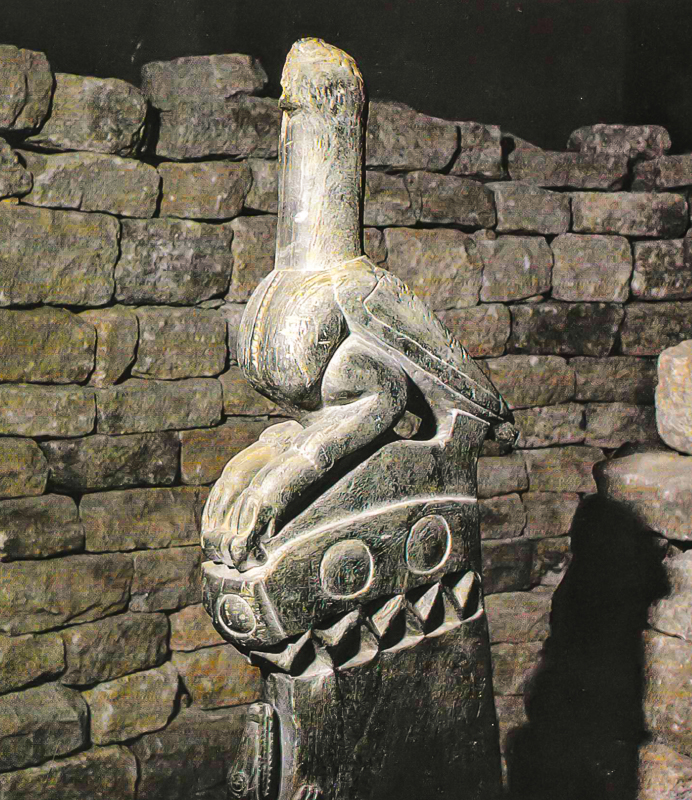
- Conical tower and circular wall of Great Zimbabwe
- 1,000-1,400 CE
- dressed granite
- Shona people, Zimbabwe
Great Zimbabwe: Swahili Coast Trading Network

- located in southeastern Africa
- strategically surrounded by rivers to facilitate transportation
- postclassical era
- connected inland goods with Arab and Swahili coastal ports like Sofala
- Arabs controlled trade from the coast
- Great Zimbabwe established tribute system to collect and redistribute valuables
- became rich from facilitating trade in port cities
- traded ivory and gold for Indian Ocean goods
Shona Peoples
- group of related tribes in modern day Zimbabwe
- inhabiting general region
- united together to create a distribution center of goods
- comprised of Korekore, Karanga, and Zezuru
- established Great Zimbabwe distribution center
- “zimbabwe” derives from Shona term meaning “venerated houses”
Architectural Features

- build in additions
- later additions show more skill
- surrounded by huts built with daga (mud and thatch)
- adjoined courtyards with painted data seats
- eroded away, so difficult to study
Walls
- composed of mortarless stacked granite
- not very common for human settlements in area
- technique: battering
- built sloping inward for stability
- walls are not defensive
- low walls in some areas
- no military features
- incomplete walls
- intended for privacy
Canonical Tower
- symbolic structure
- resembling a grain bin
- comparing with other cultural storehouses
- emphasizing the redistribution of goods
- shows the power or authority and generosity
- capped with ornamental stonework
Chikuva

- a large stepped platform
- used to display pottery and handmade goods
- female societal role
- sacred space for prayers
- represented family
Symbolism
Idea of Authority
- sought to impose authority through seclusion
- walls were meant for privacy
- high walls enclose the goods
- contrast with European model of authority through elaborate architecture
- many royal residences surrounding the area
- commoners houses are much farther out
Bird Symbols

- contained soapstone bird images
- found in looted enclosure
- birds of prey with human figures
- potential symbolism of heavenly power of the king
- or emblems of authority
- ethnographic studies suggest Shona people represent ancestors as birds
- circles beneath bird called eyes of the crocodile
- symbolically represent elder female ancestors
- Shona custom states that men invoke spirits of the vahozi by coming here
- needed to access male symbol outside the entrance of the Eastern Enclosure
- stone chevron patterns on tops of walls
- potentially linking sky and earth in zigzag pattern
- crocodiles may also symbolize rulers linking living and dead




